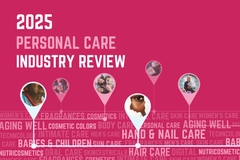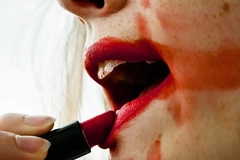EU limits PFHxA forever chemical use in cosmetics under REACH

24 Sep 2024 --- The European Union (EU) introduces Regulation 2024/2462, firming restrictions on certain PFAS in consumer products, including cosmetics. The regulation targets undecafluorohexanoic acid (PFHxA), its salts and related substances and amends Annex XVII of the Registration, Evaluation, Authorization and Restriction of Chemicals (REACH) Regulation.
The new regulation sets concentration limits of 25 parts per billion (ppb) for PFHxA and 1,000 ppb for related substances, applicable to any cosmetic product placed on the market after the transition period from October 10, 2026.
The European Commission (EC) says the new regulation seeks to reduce “unacceptable risks” to the environment and public health due to the persistence and mobility of PFHxA’s in water. The regulation also prohibits PFHxA and related compounds used in various products such as textiles, paper and firefighting foams. Various studies suggest it is challenging to get rid of the material from drinking water, contaminated sites and wastewater, and the exposure to humans is long-term.
 Regulation (EU) 2024/2462 enforces concentration limits for PFHxA in cosmetics.Industry implications
Regulation (EU) 2024/2462 enforces concentration limits for PFHxA in cosmetics.Industry implications
For the cosmetics industry, the regulation means that manufacturers will no longer be able to use PFHxA-related substances in their formulations.
The Committee for Risk Assessment (RAC) previously noted “it is likely that PFHxA is dermally absorbed, therefore, it has to be considered that cosmetic products may pose an additional relevant source for human exposure.”
The EC underlines, “alternatives are available, and socio-economic costs will be limited in comparison to the human health and environmental benefits.”
Margrethe Vestager, executive vice president for Europe Fit for the Digital Age, says: “The restriction on this sub-group of PFAS is one more milestone that brings us closer to a toxic-free environment. The restriction will ban the use of this ‘forever chemical’ in, for instance, consumer textiles, pizza boxes and some cosmetics. Our EU rules allow us to restrict harmful substances when there are safe alternatives. To the benefit of all consumers and for a green transformation of our society.”
Cosmetics companies must now ensure compliance by phasing out PFHxA-related substances from their products.
Although some products, such as personal protective equipment, are exempt from the regulation, the cosmetics industry is not exempt from this rule.
Companies will have to examine supply chains and product formulations to find and replace materials linked to PFHxA for compliance.
Maroš Šefčovič, executive vice president for European Green Deal, Interinstitutional Relations and Foresight, welcomes the new regulation:
“We are removing harmful substances from products that citizens use every day, like textiles, cosmetics and food packaging. This restriction of PFAS is a decisive step in our strategy to boost sustainability, competitiveness and innovation in the chemicals sector. Substituting ‘forever chemicals’ helps to keep our environment healthy, preserve our resources, and drive innovation in cleaner alternatives. The direction is clear, and businesses will have sufficient transition periods to adapt.”
 Cosmetic companies have till October 10, 2026, to phase out PFHxA-related substances.Regulation timeline
Cosmetic companies have till October 10, 2026, to phase out PFHxA-related substances.Regulation timeline
According to the EU, the process started after Germany filed a dossier to the European Chemicals Agency (ECHA) in December 2019, proposing limits on the manufacture, use and sale of PFHxA due to its persistence, mobility in the aquatic environment, and potential negative effects on human health and the environment.
The proposal was examined by the ECHA’s Committee for Socio-Economic Analysis (SEAC) and RAC. Although there were data gaps and concerns about the proposal’s applicability in specific situations, RAC determined in June 2021 that a comprehensive restriction across the Union with targeted exceptions was the best course of action.
Despite recommending an extension of the transition period to 36 months due to uncertainties regarding the socio-economic impacts, SEAC agreed in December 2021 that a restriction was appropriate.
PFAS problems
Ursula von der Leyen, president of the EC, told MEPs in April that the proposed ban on the use of PFAS will include some exemptions for “key technologies,” however, did not provide “legal certainty on which uses will be exempted.”
Last month, Evonik hosted German chancellor Olag Scholz at its facility. Scholz stated that he will take a “pragmatic approach” to PFAS legislation that promotes industrial development rather than hinders it.
Personal Care Insights sought an expert opinion after a study found skin is a “significant source of exposure” to PFAS from clothes and personal care products. The Cosmetic Toiletry & Perfumery Association pushed against this finding.
Meanwhile, the US state of Colorado will ban forever chemical-based cleaning, floss and menstrual products by 2026. PFAS are also found in band-aids, toilet paper, period products and cosmetics.
By Venya Patel












